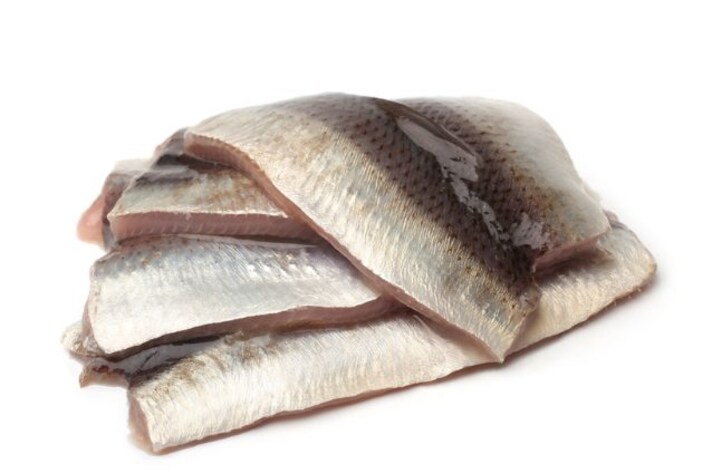
If you’ve ever encountered surströmming, Sweden’s infamous fermented herring, you’re likely familiar with the overwhelming odor that quickly fills the air. While some find its pungent aroma irresistibly tangy and satisfying, for others, the smell is nothing short of unbearable. So, what makes this traditional delicacy smell so terrible, and why do people actually eat it?
What Exactly Is Surströmming?
Surströmming is fermented herring, typically made by placing small herring fish in barrels with salt, then allowing them to ferment for several months. The result is a tangy, briny, and utterly potent food that has been enjoyed for centuries in Swedish cuisine.
Though the smell is a defining feature, surströmming is eaten with great care. It’s typically consumed with flatbread, onions, and potatoes, offering a surprisingly complex, savory flavor once you get past its initial shock.
Why Does Surströmming Smell So Terrible?
The answer lies in the fermentation process and the natural compounds that develop as the fish breaks down. Let’s break down the science:
Bacterial Activity
The fermentation of surströmming involves the growth of lactic acid bacteria, which are responsible for converting sugars in the fish into acids. This process not only gives the fish its tangy flavor but also releases volatile compounds—the chemicals responsible for the signature “fishy” smell.

Breakdown of Proteins
As the herring ferments, its proteins begin to break down into smaller molecules called amines. One of these, putrescine, is a compound also found in rotting flesh, which contributes to the unpleasant odor. Another compound, cadaverine, is similarly associated with decaying bodies. These compounds are intensely smelly and contribute heavily to the fish’s distinctive scent.
Ammonia Formation
Alongside putrescine and cadaverine, the fermentation of surströmming also produces ammonia, which has a harsh, pungent smell. The ammonia is released into the air as the fish is opened, making the odor even more potent. It’s this combination of organic acids, amines, and ammonia that creates the overwhelming scent that often causes people to recoil.
Sulfur Compounds
Sulfur is another key player in surströmming’s offensive smell. During the fermentation process, sulfur compounds like hydrogen sulfide are produced. This compound is notorious for its smell, often compared to the scent of rotten eggs. The presence of hydrogen sulfide makes the smell even more intense and unbearable for those unaccustomed to it.
What Does Surströmming Actually Taste Like?
Despite its ferocious odor, surströmming is not nearly as offensive in taste as one might expect. Once the fish is rinsed off or combined with bread and vegetables, it offers a salty, sour, and umami-rich flavor. Some describe it as a combination of strong cheese and fermented olives, with an undertone of tangy brininess.
For those accustomed to it, the taste is surprisingly complex, even though it may be challenging for those new to the dish. The fermentation process brings out rich, deep flavors that stand in stark contrast to its overwhelming aroma.

Why Do People Actually Eat It?
Given its pungency, it’s natural to wonder why surströmming continues to be a beloved dish in Sweden. Here's why:
1. Tradition and Culture
Surströmming has been a part of Swedish culture for centuries, and many people enjoy it because of its connection to history and family traditions. The fermentation process was originally used to preserve fish before refrigeration was common, and it’s kept alive today as part of Sweden’s culinary heritage.
2. A Sense of Adventure
For many surströmming enthusiasts, part of the appeal is the challenge of eating it. The overpowering smell is a test of endurance, and sharing the experience with friends or family adds to its fun and camaraderie. It’s about embracing something unusual, unexpected, and a bit wild.
3. Health Benefits
Like many fermented foods, surströmming contains probiotics that may aid in digestion and gut health. Additionally, the fish is a source of omega-3 fatty acids, which are beneficial for heart health and inflammation. While health benefits are often secondary to the flavor experience, surströmming’s nutritional value makes it more than just a novelty.
4. Acquired Taste
For people raised eating surströmming, the smell and flavor are familiar and comforting. Like any acquired taste, it becomes something to savor with time. What might seem unbearable at first slowly becomes something to look forward to, especially when paired with flatbread and traditional accompaniments.
How to Eat Surströmming Without Gagging
If you’re feeling brave enough to try surströmming, here are a few tips for making the experience more manageable:
1. Open It Outside
Surströmming is best opened outdoors or in a well-ventilated area. The smell can be overpowering as soon as the can is cracked open, so make sure you’re prepared for the pungent release.
2. Pair It with Flatbread and Potatoes
Traditionally, surströmming is eaten with flatbread, onions, and boiled potatoes. These ingredients help balance out the intense flavors and give the dish a more enjoyable texture.

3. Rinse the Fish
If you find the fish too strong, rinse it under cold water before eating to reduce the intensity of the smell and flavor.
4. Build Up to It
If you’re new to surströmming, start with a small portion and gradually increase as you get used to the taste. Trying it alongside familiar foods can help make the transition smoother.
Final Verdict: Is Surströmming Really That Bad?
Surströmming may smell like the stuff of nightmares for some, but it’s actually a rich, flavorful delicacy with deep cultural significance. The powerful odor comes from the natural fermentation process, which produces a complex combination of acids, amines, and sulfur compounds. Despite its overwhelming scent, surströmming offers a taste that is surprisingly mild, with a balance of salty, sour, and umami notes.
So, the next time you encounter surströmming, consider embracing the challenge. After all, in the world of food, the most extreme flavors often lead to the most unforgettable experiences. Would you dare to try it?
;Resize,width=767;)
